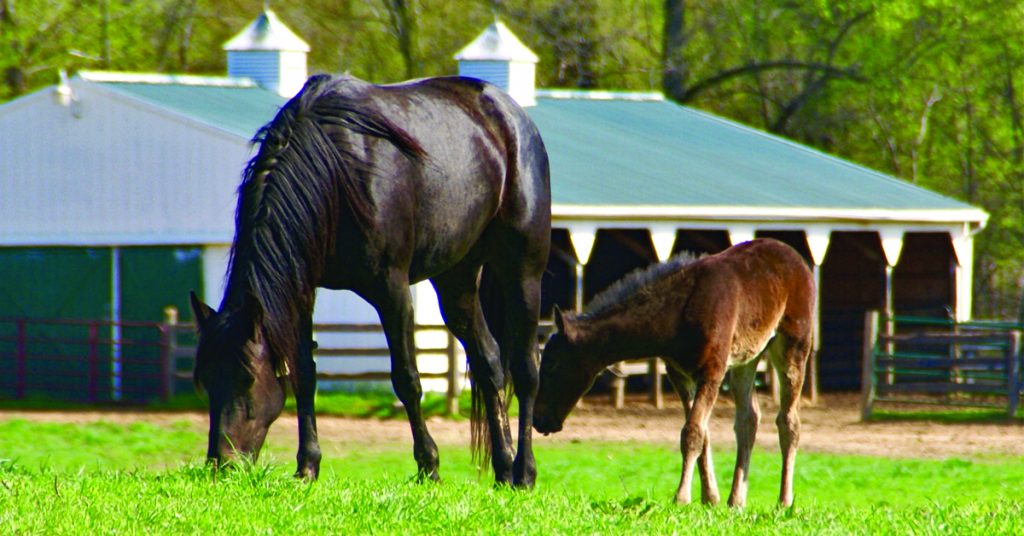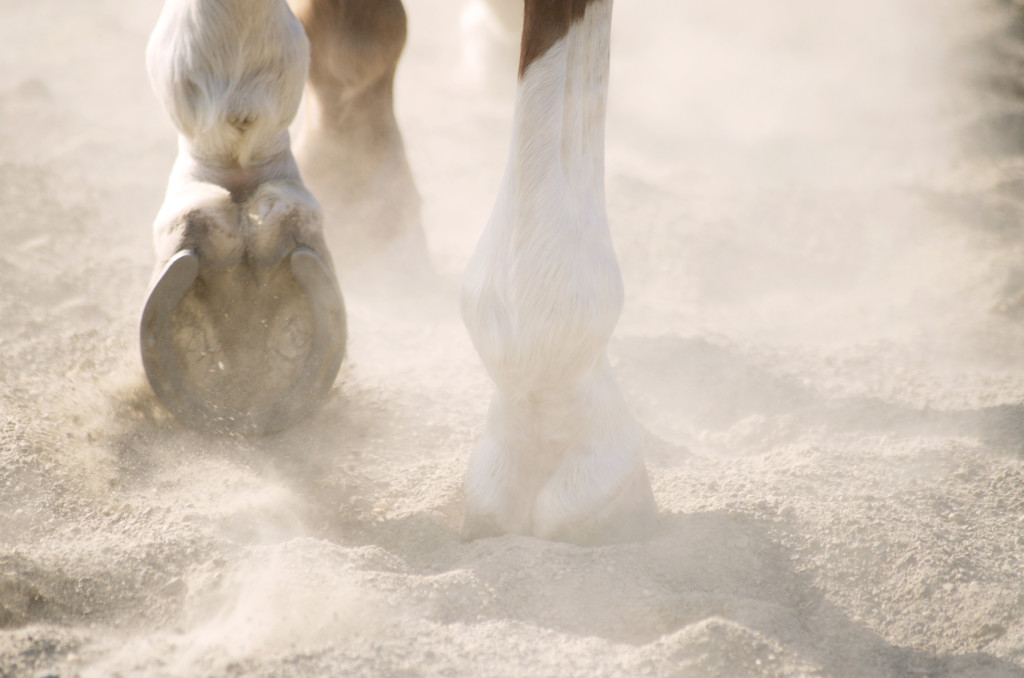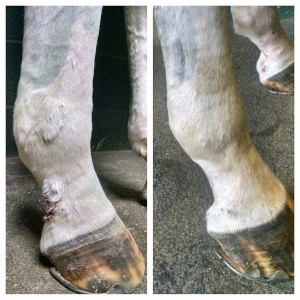Most of us know a horse that absolutely hates bugs. Even the sight of a bug has him stomping, flinching, and swishing his tail all day long. Some horses, such as Thoroughbreds, have very sensitive skin and get easily irritated by flies and other insects in turnout. A susceptible horse like this may need the complete coverage of a fly sheet, fly mask, fly boots and fly spray, or any combination of these, to stay comfortable. Does this sound like your horse? Check out a few of our suggestions for products that go beyond your everyday fly spray and can help you and your horse beat the bugs this summer.
Category Archives: Equine Health & Care
The Run Down on Thrush
Thrush is one of the most common hoof ailments, so we met up with Dr. Chad McGee to learn what causes thrush and what can be done to treat it. Continue reading
How to Combat Ticks
Finding a way to tackle tick control is a priority for every horse owner, so we met up with Dr. Chad McGee to learn when to watch out for ticks, where to spot them on your horse and how to help prevent diseases they may carry. Continue reading
All About Horse Vaccines
Have you ever wondered about horse vaccines? Equine veterinarian, Dr. Chad McGee, gave us the run down on the various types of vaccinations given to horses. Continue reading
How to Measure Equine Vital Signs
Equine vital signs include temperature, pulse and respiration. Knowing how to get these metrics can be very helpful knowledge for an equestrian, so we met up with Dr. Chad McGee to learn how to find these on your horse. Continue reading
Tips from the Tack Room: Removing Bot Eggs
 Ban the Bots Continue reading
Ban the Bots Continue reading
7 Proven Ways to Control Flies
 A house fly zips from a pile of manure straight to your horse’s eye—or the rim of your water bottle—with its feet coated in germs. A biting stable fly gives your ankle a searing sting, and you understand why your horse stomps his legs so often. Take control of the fly situation at your barn using these proven methods and a few essential items. Continue reading
A house fly zips from a pile of manure straight to your horse’s eye—or the rim of your water bottle—with its feet coated in germs. A biting stable fly gives your ankle a searing sting, and you understand why your horse stomps his legs so often. Take control of the fly situation at your barn using these proven methods and a few essential items. Continue reading
Tips from the Tack Room: Tame Flies

Avoid a fly frenzy with rotation. Continue reading
How Entire Diet Builds Better Hooves
 Kentucky Equine Research discusses what factors into hoof growth and how you can aid your horse’s hooves in growing strong and healthy.
Kentucky Equine Research discusses what factors into hoof growth and how you can aid your horse’s hooves in growing strong and healthy.
Hoof growth in horses is determined by several factors, including genetics, age, breed, exercise, metabolic rate, illness, temperature, environmental moisture, shoeing and trimming. Building strong hooves can take anywhere from six to twelve months. If a horse has dull and brittle hooves, a reliable way to improve the quality of its hooves would be through balanced nutrition. To achieve this, a total diet reconfiguration may be in order. Continue reading
All About M-T-G

Use these tips provided by Shapley’s to achieve the best results when using M-T-G for a variety of conditions.
M-T-G was originally developed by a barber to treat human skin and hair conditions. One of the “magic” ingredients is oil of cade, derived from a type of juniper tree. Oil of cade has been used for hundreds of years to treat skin issues.Today, M-T-G is used on animals, and horse owners in particular use it to treat dozens of conditions, including rain rot, scratches, sweet itch, dandruff and even thrush. You can also use it to loosen wind knots and remove smegma stains from the insides of your gelding’s legs. Tar, sap, and other sticky substances can be removed with a small amount of M-T-G. Reading the instructions can save you a bit of time and give you the best results. Continue reading



